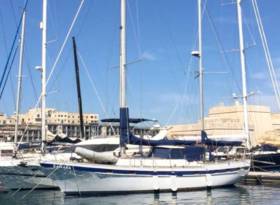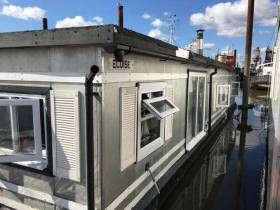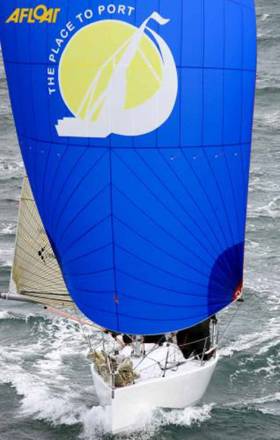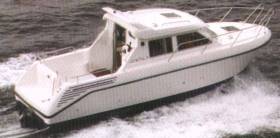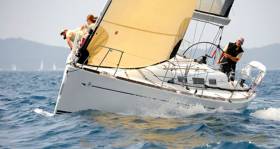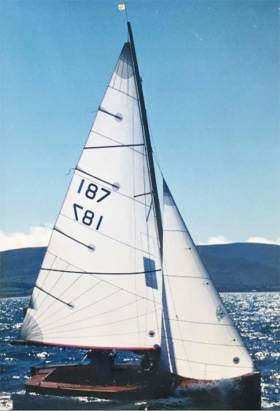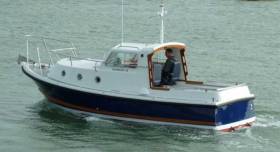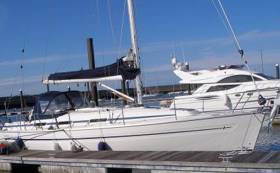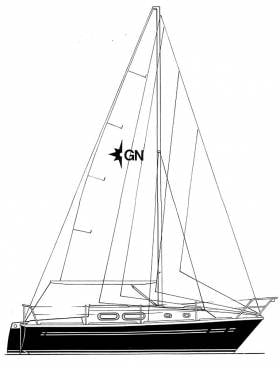Displaying items by tag: boats for sale
Top Cork Cruiser-Racer Elan 333 'Artful Dodger' is for Sale
The Cork-based successful cruiser-racer Elan 333 Artful Dodger is up for sale priced at €59,500.
This could be one of the best combination cruiser-racers around.
As regular Afloat readers will recall, this top racer has a great racing record, including a class win at Sovereign's Cup 2017, beating the competitive top half tonners.
The 2006 launched boat is also a lovely cruising boat with teak decks and a very spacious interior in great condition. If you like to cruise in comfort and race competitively, this one is hard to pass this one on Afloat's Boats for Sale listing here. The inventory includes a hot water system, stern shower, autopilot, roller headsail and cruising main with stack pack and a very spacious and luxurious interior.
 2006 Elan 333 - A new owner from 2015 has used Artful Dodger to combine racing and cruising and upgraded all the racing equipment with better deck gear and very recent high tech sails, including a Code 0 and reaching Asymmetric spinnaker with bowsprit.
2006 Elan 333 - A new owner from 2015 has used Artful Dodger to combine racing and cruising and upgraded all the racing equipment with better deck gear and very recent high tech sails, including a Code 0 and reaching Asymmetric spinnaker with bowsprit.
See advert here.
'Jongert 59' For Sale at €200k is a Real Floating Home
There are as many people down-sizing boats these days as there are those who are trading up, with it becoming more difficult to get regular crew as modern family life makes time demands on people who, in a previous age, would have regarded proper sailing time as a sacred right. But let’s assume that you’ve such a wide maritime social circle and thriving bank balance that boat size is only dictated by what you fancy, rather than what’s manageable.
In those circumstances, my own inclination would be towards a boat around the 38 to 40ft mark. A properly-designed boat of this size should have everything for a crew of 4-6 to live together for an annual cruise and the occasional extended weekend venture, and of course, it’s easily manageable if there’s just the two of you.
But what if you plan to live on board for a much longer period, or even are determined to see the boat as a floating home first, and a sailing vessel second? In that case, a serious size increase is needed, with a readiness to accept that you may not have a very lively sailing performance, but you certainly have a solid home base.
The hefty Dutch steel cruisers of the 1960s and ‘70s tick many boxes in this department, and this Jongert 59 currently on Afloat Boats for Sale is a classic of the type. She has a clipper bow which really looks as though it’s meant to be there, and at the other end there’s the great aft cabin which is the very epitome of the leisurely waterborne life. Admittedly 1972 is now quite a long time ago for year of construction, but she has been well looked after since, and if you have your life balance in equilibrium with a clear view of the times ahead, Samara could well be the way to go.
Read the full advert on Afloat here
Where to Moor a House Boat on the Irish Coast?
Afloat.ie reader Gerald Heffernan is seeking advice on buying a house boat to live on over the summer with the option of renting it out also. He asks 'Where is a good spot to park moor it and what sorry of costs are involved? I love Crookhaven,Valentina, Knightstown etc'.
Other than on the inland waterways, houseboats are virtually unknown in Ireland, and in some cases there may actually be harbour and marina bye-laws banning them. In most ports including those you mention, the rise and fall of tide has to be taken into consideration unless you can get a marina berth, and then you have to be prepared to go ashore to use the ablutions facilities. As to berthing costs, we suggest you contact the Harbour Master or Marina Manager at the port of your choice.
Corby 25 For Sale Needs Sailing Talent To Match Her Pedigree
The designs of John Corby are a fascinating area of study in many ways, as is the man himself writes W M Nixon. His father invented the eponymous trouser-press which saved so many of us from looking scruffy when we were on business trips relying on properly-equipped hotels to freshen up the trews as one day followed another, and the crisp look with which the tour had started was disappearing in a grubby wave of trousers creased every which way except the right one.
Young John could well have followed into a profitable empire of handy gadget invention, but maybe there’s room in England for only one James Dyson…..Whatever, racing yacht design has been John Corby’s passion from a very early age, and some extremely successful front-rank owners – Peter Wilson, Roy Dickson and Anthony O’Leary of Ireland being notable among them – have been more than ready to go along with his enthusiasm for what some people deride as narrow wedge-shaped boats carrying an awful lot of keel ballast in extreme torpedo-shaped bulbs of lead.
For others, there was and is only one boat worth racing, and that’s a Corby, although so far none of them has yet taken up my suggestion that a suitable name for a Corby would be Hosenbugler. It has a certain ring to it, even if it is no more than the German for trouser-press, as we’ve discovered from reading the label while getting the press-setting just right in some distant hotel room.
So maybe if you go after this Corby 25 in North Wales and feel the need to give her a new name, you’ll find some attraction in that moniker. But be warned. This is not a forgiving boat. The problem with a Corby is that she’s a boat for real experts. There’s not even a wafer-thin margin for error between doing what’s needed to get a winning performance, and putting on a show which has you in the crab grass. Yet when everything’s in tune, a Corby really sings as she buzzes along, giving a very hard time to boats twice her size.
Although this Corby 25 for sale on Afloat.ie boats for sale is 2010-built, she’s as good as new. Her history is interesting. Will Partington of Partington Marine in Pwllheli in North Wales, a keen racer when he could get the time, had been thinking Corby for a while. He got to hear that the Corby 25 moulds in Latvia – where most of the boats had been built – might be for sale. He got hold of those moulds, and built what may well be the most closely-monitored Corby 25 ever constructed, with everything possible done to optimise weight distribution.
The results were more than encouraging, with success recorded on both sides of the Irish Sea. But with Pwllheli developing rapidly as a sailing centre, the demands of his business were such that Will simply didn’t have the time to campaign the boat nearly as often and as totally as he would have wished, so now he’s looking for a new owner who can do the job properly.
The Corby 25 is of particular interest to time-starved Irish owners, as she’s conveniently trailerable, and once you’ve previously had the rig set up in optimum tune, it takes only a couple of hours to rig her again when you’ve handily trailed to some new regatta. Yet as she’s IRC offshore compliant, this year’s big logistics challenge of doing the ICRA Nationals in Crosshaven from June 9th to 11th or the Sovereign's Cup from June 21st.
All the data on this particular Corby 25 is here on Afloat.ie
It could well be that anyone from the coastal districts of Scandinavia has had more than enough of people making silly stereotyped comments about the Vikings writes W M Nixon. But the reality is that when it came to boats, the Vikings really were in a league of their own. And when that Viking maritime heritage has been transferred down the ages into a modern powercruiser which is well able for the challenging waters off the west coast of Norway, we in Ireland should take notice.
For although there’s no lack of sunny images projecting a picture of Norway with a gentle sea, we know in Ireland that such photos will be readily available from the usual sources to portray our own waters too. Yet on our home waters, we know fine well that any serious boat going along the Irish coast has to be ready to take the rough with the smooth. And that’s also the way it can be in Norway, even with all those sheltered leads inside the myriad islands.
So a 26ft powercruiser from a solid Norwegian family firm based on an island off Bergen, with a tradition going back to 1966, for sale on Afloat Boats for Sale, deserves favourable attention. And this Viksund St Cruz 260 for sale in Wexford (yes I know the place has a Viking name, but even BoatBlogger has his limits) becomes more interesting the more we look at her.
(Above) The Viksund 260 off the ancient Viking port of Wexford.
Sea-keeping ability is a Viksund priority, and that is emphasised in the hull design, which can reach 18 knots when the 150hp Volvo diesel is flat out, but a cruising speed of 14 knots keeps things manageable, and the good sense of the hull shape is well able for a variety of conditions.
That said, the boat will blossom in good weather, and the cockpit/accommodation layout leans towards this, while providing overnight accommodation for three. The Viksund 260 is a sensible compromise between the needs of seaworthiness and the hope that the weather Gods are going to send a day reminiscent of the Mediterranean at its sweetest. This well-equipped 2002 model is priced at €49,000 through Leinster Boats.
See the full advert here.
If you have a boat for sale make sure it is listed on Afloat boats for sale site
Dufour 40 Performance Sailing Cruiser is A Real Life–Enhancer
It tells us much about the intrinsic quality of a boat if her looks don’t seem to date writes W M Nixon. The debut of the Dufour 40 Performance in 2002, as the result of an interesting design linkup between Umberto Felci and Patrick Roseo, drew a telling level of interest from discerning sailors. They saw a carefully-planned boat which didn’t look outrageously modern, yet had a certain quality which suggested she still wouldn’t look dated twenty years hence.
Fifteen years ago, one of the most experienced and thoughtful sailors in Cork decided that here was the dreamship, and by 2003 his new boat was in Crosshaven. She demonstrated with a lively mixture of family sailing, white sail racing and cruising, that she was everything the pundits expected, and more.
Sadly, that first owner, one of Irish sailing’s great life-enhancers, was taken from us all too young. It was felt that selling his beloved boat away from Crosshaven would ease the pain. Yet such had been the friendly effect that this boat had made on everyone with her first owner that, as a mark of respect, the new buyer on the East Coast retained the track on the chart plotter of his final year in his beloved Cork Harbour.
Now, that second owner has realised that the years are passing, and he has a fascinating new line in boat ownership in mind, a completely new track to mark the passing of a landmark birthday. So this dreamship is for sale for only the second time, and at the very sensible price of €89,500.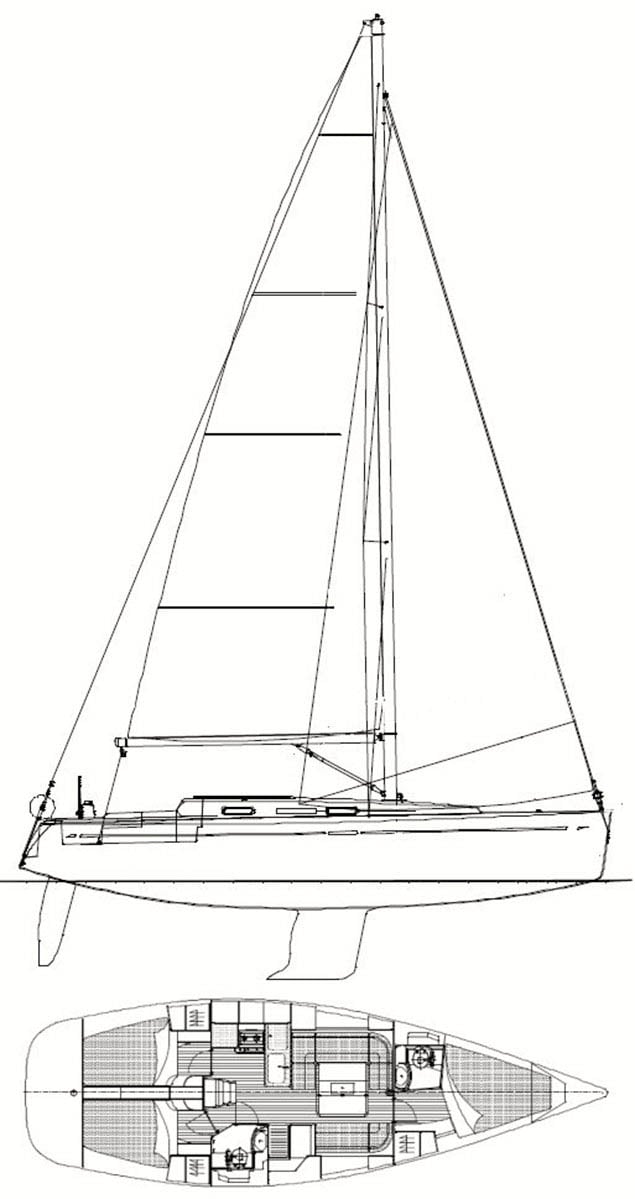 The layout allows for the forward stateroom to be completely en suite.
The layout allows for the forward stateroom to be completely en suite.
I’ve had the pleasure of going to sea on her, and she’s as good-natured a boat as you’ll come across in many a day’s sailing, while having an unexpected yet very real oomph in her performance, which makes a spot of racing unexpectedly rewarding. But in the bigger picture, undoubtedly she’d give of her best with well-planned and maybe extensive cruising based on a judiciously-balanced programme between longer hops and detailed visits to intriguing ports.
She handles a treat under sail or power, and has enough assisted gizmos to make the prospect of a quick evening jaunt after a harassing day at the office just the ticket to revive the spirits. As I said, that much-missed first owner was a noted life-enhancer. I think this boat is too. She comes very highly recommended, full details on Afloat.ie's Sailing Cruisers for Sale here.
Dublin Bay Mermaid no 187 'Zuleika' For Sale
The five–times National Championship winning clinker–built Mermaid Zuleika is for sale. Built in 1996 by Des Tyrrell the Derek Joyce owned and skippered dinghy was fitted with a new deck last season.
Priced at €16,500 the boat comes with many extras including a trailer.
See the full advert for Zuleika on Afloat boats for sale here. Contact: Derek Joyce. Ph: 087 2533085. E: [email protected]
Seaward 23 Power Cruiser For Sale Offers Best of Both Worlds
The boat community has a significant proportion of formerly hundred-per-cent sailing enthusiasts who have reached the stage in life where they accept that their needs might be better met by an able motoryacht writes W M Nixon
But it mustn’t be a glossy and bulbous machine which critics – themselves included – would dismiss as a gin palace. On the contrary, their ideal is a boat with a discreetly workaday character, a boat clearly related to pilot boats and patrol vessels and the like.
At the upper end of the size scale, the pace was and still is set by the Keith Nelson type. But the Nelson boats seem to work best when they’re more than 30ft long. Below that size, however, it’s the Seaward range which increasingly dominates, and the Seaward 23 has carved out her own niche in this very positive segment of the market.
So much so, in fact, that it’s almost enough to say that a Seaward 23 is the pet boat of one of Ireland’s most distinguished senior sailors, a nonagenarian who in his peak sailing days was several times Helmsmans Champion in addition to winning many major titles inshore and offshore.
If the Seaward 23 is good enough for him, then she should be good enough for the rest of us. His particular model is twin-engined, but this 1986 version for sale via Afloat.ie in Mullingar at €17,000 through Leinster Boats is single-screw with a 45hp BMW D-50 diesel, which is more than adequate power for most uses.
And having one engine makes the cockpit much more commodious. In a boat just 23ft long, the fact that there’s a substantial coachroof/wheelhouse already taking up much of the hull gives added importance to any extra space which can be provided by the cockpit. While the demo boat whose photo heads this article had not yet been fitted with a proper cockpit tent, the one in Mullingar comes with it in place, and it means the roomy cockpit is in effect a third cabin.
She’s a notably seaworthy boat, she provides full overnight accommodation for two with a proper separate toilet/washroom, in good summer weather you might even be able to set up an extra bunk or two in the cockpit, so she offers the best of both worlds between day cruiser and weekender - and all in a very manageable size package.
This is the time of year when boat-owners can no longer push to the back of their minds the thought that some bits of equipment aren’t working quite as well as they should, while others maybe aren’t working at all writes W M Nixon.
It’s amazing how much cruising or day sailing you can do with some item of gear not doing its fair share of the work. But against that, there’s nothing which quite compares with the quiet satisfaction of knowing that everything has been serviced as and when it should be, where renewal was required the job was done on time, and that this is how it has always been with the boat involved.
Clearly, the private vendor of this Bavaria 36 yacht for sale in Dun Laoghaire understands this mind-set very well indeed, for as he says himself, this boat is well-presented. In fact, you could take it all as the very model of how a boat should be offered for sale at this time of the year, as the first hint of a stretch to the evenings starts to get those sailing juices flowing again.
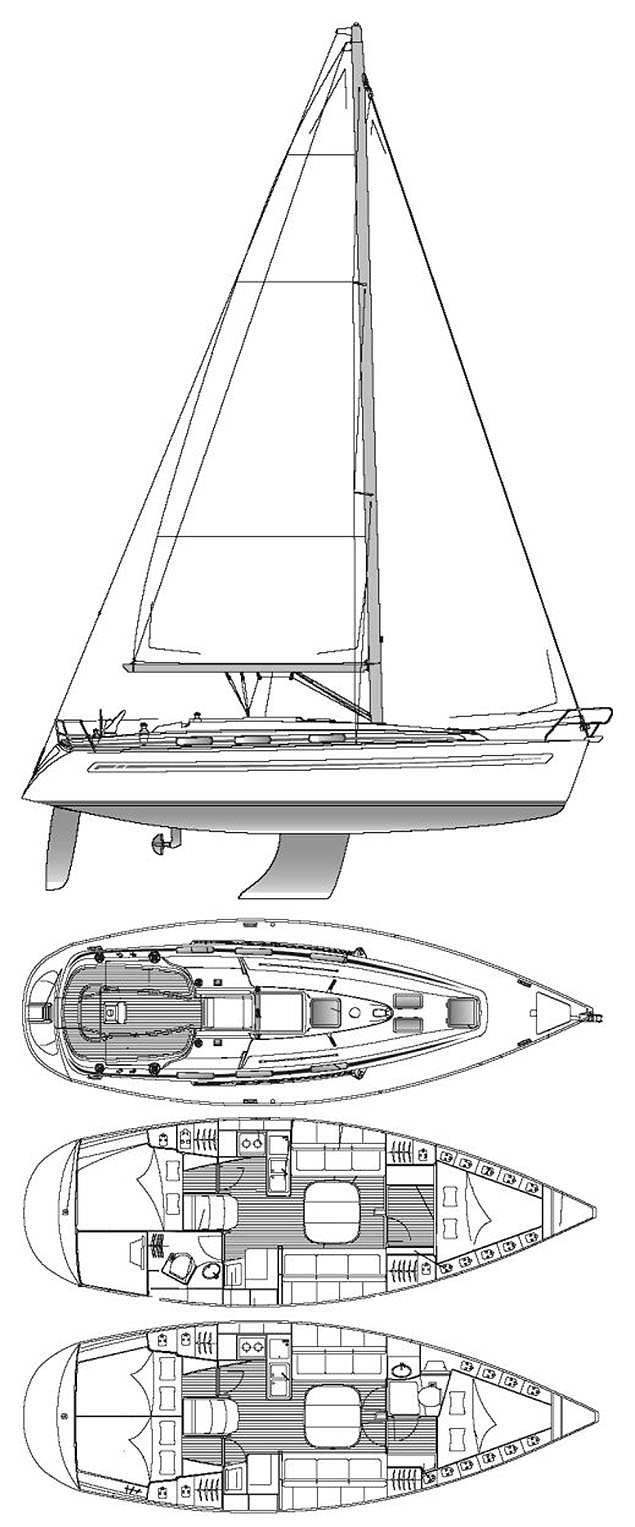 A handy size – the Bavaria 36 for sale in Dun Laoghaire is the three-cabin version.
A handy size – the Bavaria 36 for sale in Dun Laoghaire is the three-cabin version.
The Bavaria 36, when it appeared in 1998, virtually defined an unmistakably German brand. Sensible, no nonsense boats which offered oodles of room, yet they can turn in a surprisingly nippy performance with genuine pleasure in the sailing.
She’s priced at €58,500, and there’s no doubt you could find seemingly comparable boats on offer for less. But this Bavaria 36 has had only two owners since she was built in 2004, and they’ve lavished regular attention on a boat which arrives into 2017 with everything working a treat, complete with new standing rigging fitted within the past year, together with recent stack pack, spray hood and a complete cockpit cover with all the goodies. Definitely worth a look. Read the advert on Afloat boats for sale here
Boats for Sale: Westerly Griffon’s Enduring Attraction
There’s something about the Westerly Griffon 26’s determined dedication to simplicity which gives this little sloop designed by the late Ed Dubois a certain style writes W M Nixon. For starters, describing her as “little” seems immediately inappropriate, for if ever the phrase “big-hearted” was on target, it’s right here on a 26-footer which proves to be a genuine family cruiser, yet with a surprisingly zippy performance. An example of this sailing cruiser is currently for sale on Afloat.ie here.
But then, that’s what you’d expect from a designer of wide-ranging talents who went on to include the overall winner of the 1987 Fastnet Race, the Dubois 40 Irish Independent, among his many successful creations. For the Dubois 40 was yet to come when he first sketched out the lines for the Westerly Griffon in 1979. Yet at a time when boats were tending to become larger, this gallant craft punched above her weight to such good effect that the Westerly Griffon 26 Mark I stayed in production for three years with 329 boats being built, following which the Mark II was introduced with an up-graded interior.
The real Griffon aficionados tend to reckon there’s something more genuine about the Mark I, so this boat will be to their taste - as a 1980 boat, she’s plumb in the middle of the initial production line. However, dedication to having everything original has its limits, and your Mark I devotee will be pleased to note that this dark blue version had a new more powerful 20hp Beta Diesel fitted in 2009, which makes sense in every way.
She’s realistically priced at €9,950 with Crosshaven Boatyard. And for those with pre-conceived notions about a 26-footer being a decidedly small boat, be prepared to be pleasantly surprised.
Read More on Westerly Griffons here.


























